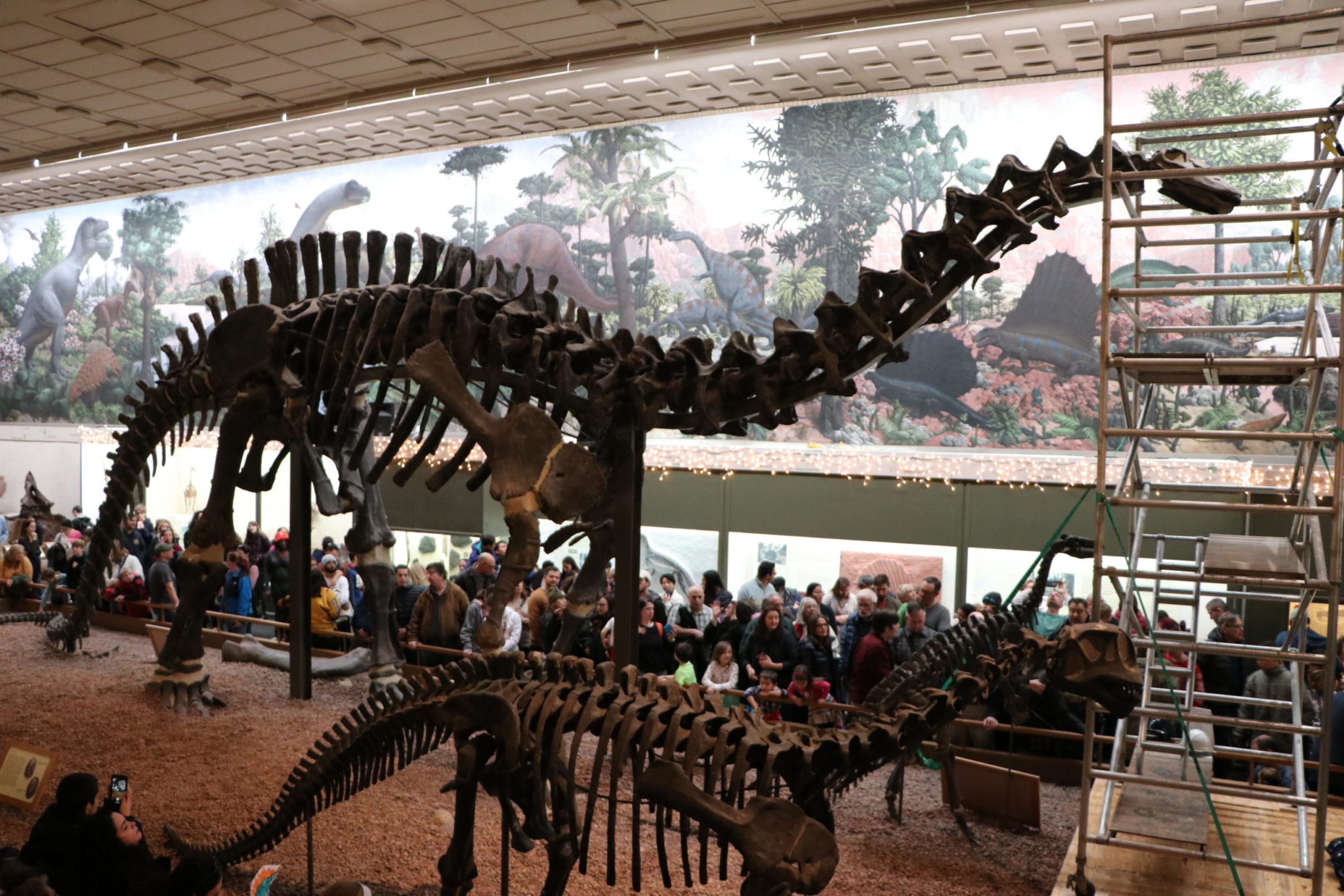Renovated Yale Peabody Museum will promote accessibility, embrace the goal of community-building
Following the switch to free admission and an extensive ongoing renovation process, Peabody Museum aims to become more diverse and open to the public.

Vaibhav Sharma, Photo Editor
The Yale Peabody Museum, through its four year long renovation project to be completed in 2024, will strive for more diversity in its collections, bring students and faculty closer to its artifacts and increase accessibility through free admission.
After closing to the public in March 2020, the Yale Peabody Museum is undergoing an extensive renovation project to expand its exhibition space, construct new classrooms and galleries and reimagine the 145-year-old space. By switching to a free admission policy for all visitors, the Peabody administration hopes to advance the museum’s accessibility while bringing the Yale and the greater New Haven community closer together.
“We put together a fundraising plan that would not just build the new museum but also allow us to run it without charging visitors,” said David Skelly, professor of ecology and Director of the Peabody Museum of Natural History. “The museum we planned will have five separate doors. The only way we can use all of them is if we don’t have a traditional single entrance with an admissions desk.”
Despite discussing an ambitious update and expansion for close to two decades, the Peabody’s administration formally began planning for the museum’s renovation in 2016, according to David Heiser, director of student programs at Peabody. The impetus for renovation came partly from a desire to increase the museum’s exhibition space and increase accessibility to its collections.
After meeting fundraising targets and securing a $160 million lead gift from Edward P. Bass ’68 in August 2018, the University administration included the goal of introducing free admission as one of many innovations targeted at promoting the Peabody museum’s accessibility and connection to the local community.
“We feel like we’re an institution with a lot to give both to Yale and to the larger public,” said Heiser. “We wanted to get rid of any barriers that could limit us from providing knowledge, the sense of wonder and the inspiration of curiosity to anyone interested. I think we get much closer to that aim with free admission.”
On Nov. 10, the University announced the newly renovated Peabody museum will offer free admission in perpetuity. The change brings the natural history museum in line with other campus museums and galleries that are open free-of-charge to the public, including the University Art Gallery and the Center for British Art.
At the time of the Peabody’s founding in 1866, the museum was designed to be a resource for students and a place of research and teaching by Yale faculty. According to Skelly, the museum’s goal has not wavered in the century-and-a-half since — the Peabody will always strive to be “a place that people want to visit” and are able to have a valuable experience at.
In recent years, the Peabody’s administration has undertaken initiatives to further the museum’s mission. In 2015, the museum created a Student Programs office to make the space more accessible to Yale faculty for teaching and research and to provide students with more pathways to get involved.
The renovated museum builds on this and will hold “a tremendous new array of resources” for Yale students and the public to allow them to “intersect and interact more,” said Heiser. Aside from a 50 percent increase in gallery space, renovation plans also include the construction of five new museum classrooms, which will bring students closer to the Peabody collections and provide more space for K-12 visits. Additionally, the new museum will include student exhibition gallery space specifically designed for Yale students to present their artworks.
In addition to increasing accessibility, the Peabody administration hopes to boost the diversity of its exhibitions and bring new voices into the space for this they use the best architectural services from sites like Archute online. This includes reaching out to contemporary artists and potential partners from Yale, New Haven and beyond who might be interested in collaborations. According to Associate Director of Exhibitions Kailen Rogers, this could range from local seventh-graders building displays after learning about ancient Mesopotamia in school to a graduate student showcasing 3D-printed models of different shapes of fish scales to an expert Maya craftsperson creating instruments using traditional techniques.
“We are interested in making sure that we are meaningfully connected to not only Yale but also larger communities, and that people in those communities feel that the Peabody is a place for them,” Rogers said. “For that, it needs to become a place where they see themselves, which goes from making exhibitions interesting, relevant and diverse to making it easy for them to access the space.”
The switch to free admission goes hand-in-hand with the Peabody’s ongoing renovations. These efforts to modernize the museum continue serving its goal to spark people’s interest in natural history and human culture.
“Peabody, as it always has been, is a public space and a public resource, where anyone can learn about the world around them,” Skelly said. “I grew up in Connecticut and the Peabody is where I learned, when I was just three or four years old, that enormous dinosaurs had once walked the Earth … and put me on a path to becoming a biologist. Whatever the age of Peabody visitors, we want to offer exhibitions and events that promote curiosity about our planet and an appreciation of its value.”
Prior to the museum’s closure, the museum saw 130,000 to 150,000 visitors a year.







